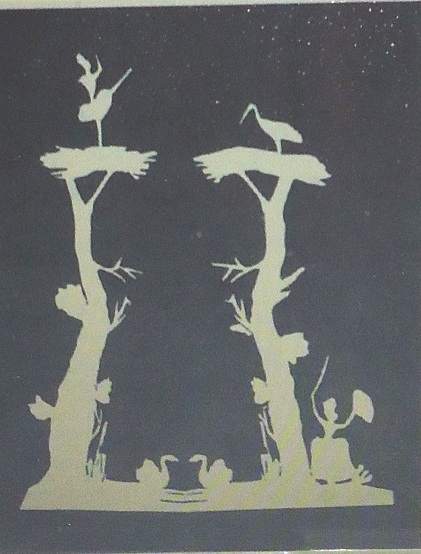
By Berta Gaster
Hans Cristian Andersen had the ability to do surprising things with a pair of scissors. The strange skill of his enormous hands was partly why his mother decided to make a tailor of him in his adolescence.
The immortal Danish author of The Ugly Duckling and other unforgettable fairy tales is remembered in the autobiographical pages of The True Story of my Life:
‘I spent my time in my puppet theatre, and my happiness consisted in collecting scraps of fabric which I cut and sewed. My mother considered this good practice for my future profession as a tailor.’
Years later, in Copenhagen and in other places, Cristian Andersen delighted children cutting out fantastic paper figures of ballerinas, swans, storks and castles for them with the same speed with which he narrated his stories.
One nightfall during the summer, Cristian was sitting in a rustic Swedish hostel, wrapped in the brightness of Lake Siljan, according to his biographer Signe Toksvig, when the small granddaughter of the hostel manager entered nervously to curiously examine his colourful tartan traveller’s bag and the red satin lining of his little trunk. The artist quickly took a scrap of paper and cut out a Turkish mosque with minarets and ajimeces. The girl took it in astonishment and ran out.
Soon enough, Andersen saw a crowd of men and women in the courtyard, gathered around the old hostel manager who hels the mosque above her head, out of the reach of the girl. Minutes later, the grandmother entered Andersen’s chambers with a plate of gingerbread in different shapes.
‘I make the best gingerbread in Delarne’, said the woman, ‘but the shapes are old. Sir knows how to cut out such beautiful things…Could he cut out some new molds for us?’
Swayed by her tone and the use of third person, in the Swedish way, Andersen remained almost all of the northern summer night occupied with inventing new shapes for the gingerbread: nutcrackers with long boots, windmills with their miller, men with slippers and a door in the stomach, ballerinas with a leg in the air…The old lady hostel owner was brimming with her contentment ‘They’re truly new shapes’ she said in her singsong language, ‘but difficult to make!’
Hans Andersen also liked to draw and he did it well, although with a certain inscrutability. He left some albums full of little drawings, brief verses and notes about the ‘muses and poetry’. He always considered himself a poet even after having gained fame with his children’s stories. Many of those drawings were done during his trips to Elsinor, to Florence, Rome and other places in Italy and some contain his memories of trips to Turkey and Germany.
The illustrations on this page are three fairy tales or ‘cutout fantasies’ cut out of paper by Andersen and currently conserved by the Andersen Museum of Odense, Denmark where the great storyteller who has delighted generations of children and adults was born.
5 June 2012
